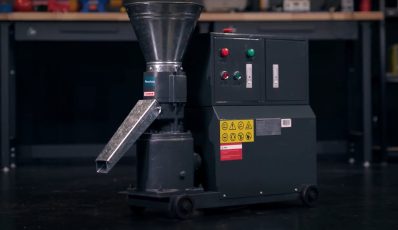Cutting plexiglass might be necessary if you are renovating a garden shed, gazebo or porch. The use of cut-to-size acrylic glass sheets will be perfect in this case. Read our guide and find out how to cut plexiglass.

Cutting plexiglass might be necessary if you are renovating a garden shed, gazebo or porch. The use of cut-to-size acrylic glass sheets will be perfect in this case. Read our guide and find out how to cut plexiglass.
When do you need to cut plexiglass? Uses of plexiglass
Plexiglass, otherwise known as acrylic glass, is relatively resistant to mechanical damage and does not break like glass. It is also much lighter than traditional glass. Just like normal glass, plexiglass too is practically transparent. The exact level of transparency of plexiglass sheets can be adjusted according to your specific needs during the production stage.
Its thermoplastic properties make it possible to freely shape plexiglass, and it is also relatively easy to cut. Resistance to UV rays means it will not turn yellow after prolonged exposure to the sun. Due to these properties it is perfect for various uses.
In the advertising industry, for example, it is used for making various types of stands and displays. Roofing made of acrylic glass is also very popular in public places, for example in bus stops. Plexiglass sheets are also a great solution when it comes to thermal and acoustic screens. During the COVID-19 pandemic they were also commonly used as a material for protective screens in shops, bars and other public places.
In addition to public use, acrylic glass is also used in private homes. It is perfect as roofing for a garden shed for storing firewood or garden tools. Other uses could be skylights or windows in a gazebo. Whatever its use, if you want to do it yourself then you should know how to cut plexiglass.
What kind of plexiglass is cut most often?
Plexiglass sheets are widely available, and you will find many different types on the market, differing in thickness and transparency. The thickest sheets are about 20 cm, however the most commonly used thicknesses are 2, 3 or 4 mm. Cutting such plexiglass is not difficult, however it requires the use of appropriate tools, which most people will already have at home. Just remember that the thicker the sheets, the harder they will be to cut.
Tools for cutting plexiglass
Cutting thin sheets of plexiglass in the form of thin plates is easiest using a hot knife. A heated standard knife can also be used. Slightly thicker sheets can be cut manually using a flush cut saw blade, although make sure it has fine teeth. This will prevent an uneven finish, and also minimise the risk of the sheet breaking during cutting.
In addition to manual methods, plexiglass can also be cut using machines.
-
Safety Glasses – set of 3 – clear – one size
33.99 GBP23.99 GBP -
Safety Glasses – set of 15 – clear – adjustable
59.00 GBP36.99 GBP -
Safety Glasses – set of 10 – clear – one size
65.00 GBP39.99 GBP -
TECTOR Safety Glasses – clear – EN166 – adjustable – 10 pieces
Cutting plexiglass with a jigsaw
If you use a jigsaw then you can choose from many different types of blade. According to some specialists, the best solution in this case will be a laminate cutting blade, although a lot depends on the settings used. Cutting at too high speed may lead to excessive splatter and mechanical damage, while cutting too slowly you could melt the edges of the sheet.
You should therefore adjust the settings of the jigsaw manually. A good idea is making some trial cuts on a spare sheet of plexiglass at different machine settings. If the acrylic glass starts to melt during cutting, a light lubricating oil is a great way to reduce friction, by applying it to the jigsaw blade and the cutting. Remember to avoid oil in the form of spray, which contains gas that could ignite under the influence of friction.
Cutting plexiglass with a circular saw
You can also cut plexiglass using a circular saw, which is perfect for accurately cut even thick sheets. But remember to pay attention to a few things, the first of which is the maximum speed of the saw. This should be set at around 8,000 rpm. The second thing to remember is to securely fasten or support the material being cut, which is important to prevent it from moving during cutting, and therefore avoid damage.
The third and probably most important thing to remember when cutting plexiglass with a circular saw is the use of appropriate discs. Otherwise you may end up with melted edges or cracks in the cut material. The most popular type are carbide discs, which are great for cutting aluminium, but when it comes to plexiglass they will not be ideal.
High-speed steel discs will be best. Unlike the previously mentioned type, they are suitable for processing various types of plastic material ensuring even cuts, without melted edges or other types of mechanical damage. High-speed steel blades are perfect for cutting plexiglass, thanks to their fine-toothed blades with an impact angle of 0 to 5 degrees.
The last things to bear in mind when cutting plexiglass with a circular saw is to take into account the thickness of the blade. As this is usually around 3 mm, this value should be taken into account when determining the point where the blade makes contact with the material and where the cut starts. This is important to achieve the desired effect.
Laser cutting plexiglass
While jigsaws and circular saws are great for cutting plexiglass, when it comes to the precision and quality of the edges on the cuts a laser plotter is ideal. Using CNC technology, it is possible to cut out virtually any repeatable shapes. These modern machines operate on the basis of advanced computer algorithms.
Since laser cutting of plexiglass involves melting the material, the question arises whether it is safe for the environment and human health? Plexiglass is flame retardant, so no chemical reaction takes place when it is exposed to high temperatures, and no harmful substances are released. It is therefore completely safe for the environment and the user.
Health and safety products when cutting plexiglass
We already know that you will not be forced to inhale harmful vapours when cutting plexiglass. Therefore, when it comes to health and safety, you will not have to worry about your respiratory health. However, you can be exposed to a number of other risks, mainly related to how you cut the plexiglass.
Using machines such as a circular saw or a jigsaw could cause physical injury, so wearing protective gloves and work clothing is a good idea. Protective goggles or helmets will also help you avoid injury. If you are interested in the topic of protective items for such jobs, we recommend our other article about which welding helmet to buy.
How to cut plexiglass – summary
Cutting plexiglass is a skill worth learning if you want to use acrylic glass sheets in your home or garden. You can use plexiglass, among others, to make various types of roofing, as well as skylights and windows in garden sheds or gazebos. It can also be used for various types of decorative elements. Thanks to its main advantages – toughness and resistance to breakage and weather conditions, plexiglass is a popular choice for many uses.
We will not need use any special tools or machines to cut it. The simplest manual methods are using a flush cut saw blade or a hot knife, while more advanced methods include power tools such as a jigsaw or a circular saw. The most modern way to cut plexiglass, however, is to use laser plotters.
Regardless of the cutting method, however, always remember about work safety and read the user manual before use.






Share